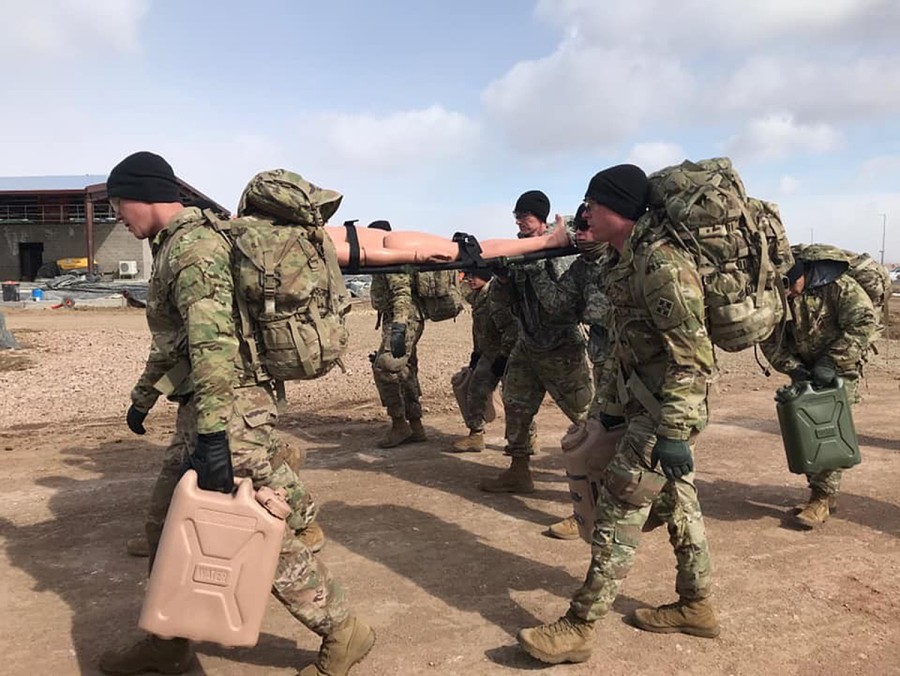The Situation in Afghanistan
April 23, 2021
A month after Islamic terrorist group al-Qaeda attacked the United States on September 11, leaving 2,977 dead and the entire country in a shocked state of grief, sitting president George Bush spoke solemnly of retaliation. He addressed a country that had watched two hijacked airplanes fly into the World Trade Center, who had anxiously awaited the call of reassurance from spouses or siblings, who had witnessed an unprecedented era of inhumanity unravel before their eyes. From the White House Treaty Room, often associated with peace-seeking missions, the President announced the United States’ response in Afghanistan of aerial bombings of al-Qaeda and Taliban training camps and military installations. Given the state of the country, the address was met with broad support, although lacking a coherent strategy and timeline for its attainment. Twenty years later, the war has become the longest and most unpopular in American history– draining U.S. attention and resources for two decades with no end in sight.
The war, as former President Barack Obama addressed in his memoir, had always been a war of necessity rooted in the possibility of Afghanistan terrorist groups returning to power and consequently using the country as a “launching pad for terrorist attacks against the United States and its allies” (A Promised Land). But the eradication of such groups requires the military deployment of American troops to attain a complex and largely immeasurable feat of stabilizing a country. The Obama administration, along with multiple escalations of the war effort, implemented a novel strategy that focused on protecting the Afghan population rather than targeting militants. Following the killing of terrorist leader Osama bin Laden, the federal government began a gradual withdrawal of troops in preparation for a complete withdrawal by the end of 2014. However, by the end of the Obama presidency in 2016, nearly 9,000 troops remained in Afghanistan and permanent withdrawal seemed unlikely.
Donald Trump entered the presidency with the promise of ending the war through a negotiated agreement with the Taliban to withdraw all U.S. forces by May 1, 2021. Journalist and war expert Dexter Filkins explained the agreement as unconventional in its exclusion of the Afghan government and its casual diplomacy towards the terrorist Taliban. The agreement was ironically contingent on the Taliban not supporting any terrorists in the country and halting all killings of American soldiers. Meanwhile, the group was targeting Afghans; encroaching on cities and murdering opposition. While sitting at the table of democratic diplomacy and negotiating a cease-fire with the American government, the Taliban had launched an aggressive assassination campaign within their country.
The Biden administration has inherited a chaotic war situation, an unrealistic pullout date, an uncooperative negotiation table, and an impending decision that will impact the future of Western effort in Afghanistan: to withdraw from the country or to stay and blow off this window of opportunity for a peaceful exit. Ongoing peace talks with the Taliban show no likely settlement by May 1, while the domestic attitudes continue to place intense pressure on the federal government. Taliban spokespersons have pledged that any American breach of the planned deadline would be unacceptable and would lead to a resumption of Taliban attacks on American troops. As vice president to Obama, Biden promoted minimal American presence focused solely on counterterrorism missions. As President, however, the consequences of either decision weigh heavily on his administration and any chosen course of action.
Ending the United States military intervention in Afghanistan presents a threat to domestic security, as the resurgence of terrorist groups in the Central Asia area is a likely occurrence. The Afghan central government is unable to halt Taliban advances in the country without the support of the U.S., indicating grim prospects for peace following American withdrawal. Nonetheless, many criticize this interference as futile and counterproductive, pointing to the country’s violent nature as an indication of unreasonable efforts to establish any semblance of a stable, democratic nation. The war has been deemed unwinnable and is consequently seen as a drain into which the United States is uselessly depositing resources and focus. Essentially, support for involvement prioritizes future risk; opposition for involvement focuses on the cost of past efforts and the inefficacy of attempts to improve the situation.
After three months spent assessing the inherited timeline, the Biden administration has announced that “troop withdrawal would begin before May 1 and conclude before the symbolic date of September 11.” Some troops will remain in the country to protect American diplomatic presence in Afghanistan, but the news comes as a relief to military families and ardent critics of America’s ‘Forever War’. The news also provoked a reaction of uncertainty and abandonment from the Afghan people, who fear that without the umbrella of American protection, their country will lose its modest gains towards women’s rights and a state of democracy.
When the country was under terrorist control from 1996 to 2001, women were prisoners in their own homes– banned from receiving education or employment. Propped up by billions of American dollars, Afghanistan’s shaky democracy has produced an urban class of educated, outspoken, and powerful women working as journalists or civil servants. Many hope that a resurgence of the Taliban will not cause a return to the previous norm; as Afghan negotiator Fatima Gailani explains, many hold the belief that “[women] are now a force in [the] country; no one can deny them their rights or status.” Nonetheless, Afghan attitude to Biden’s announcement indicates that the country’s citizens largely believe it is the wrong decision. For two decades, the United States has pledged peace, prosperity, and democracy achieved through its steady support; now, certainly without these conditions established, the American government has decided that it has had enough. “It is unreasonable, hasty, and a betrayal to us. It pushes Afghanistan into another civil war,” explained Ghazni Major Saifuddin Azizi.
The issue is complex, and each argument poses unique questions of morality and strategy. To stay and aid the Afghans in stabilizing their government means more American tax dollars used to fund a trivial military endeavor and more American lives lost. To withdraw troops and end American military involvement in Afghanistan presents the possibility of an allied country succumbing to terrorist oppression, which in turn poses a domestic security threat to the United States. There is seemingly no right decision, as there often isn’t in complex political matters, but Biden and his administration remain headstrong on the withdrawal timeline although acknowledging that Afghan could remain active on America’s foreign policy priorities for this current administration and future ones.










